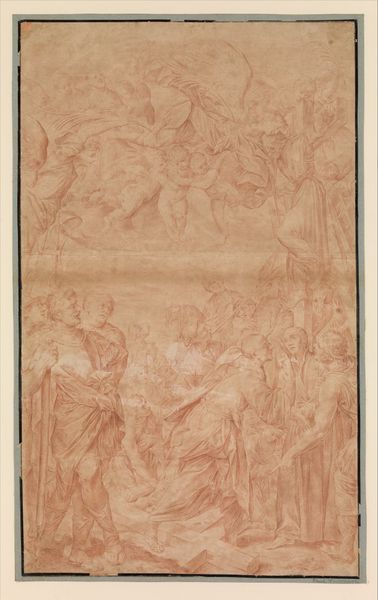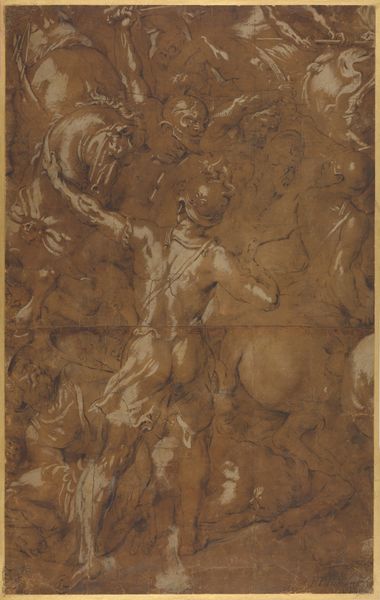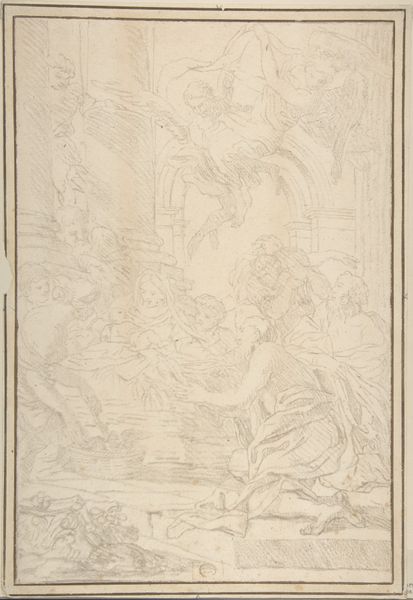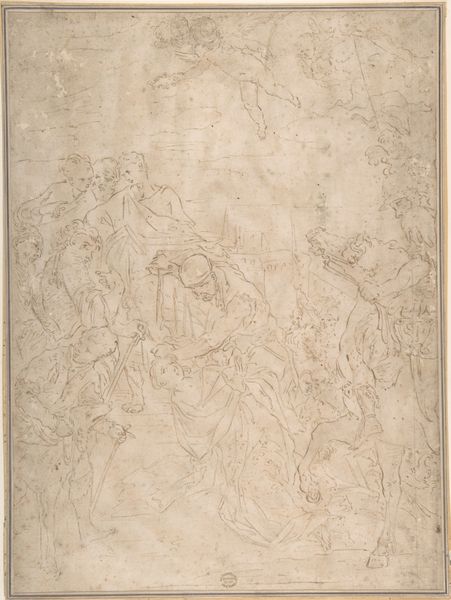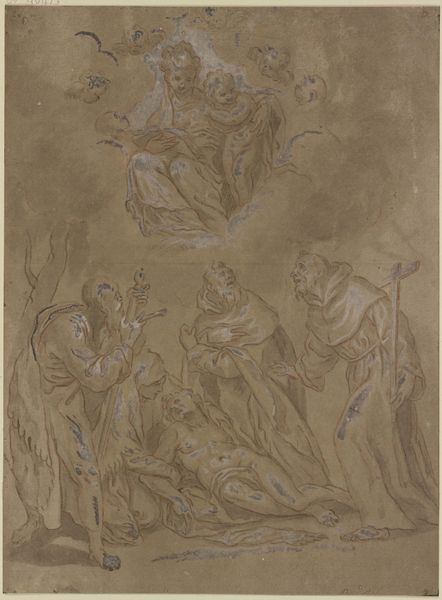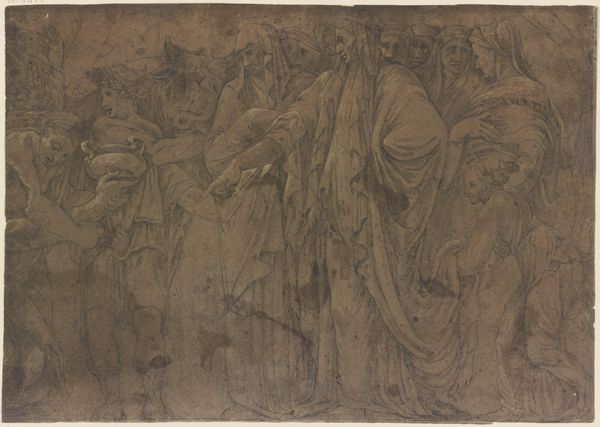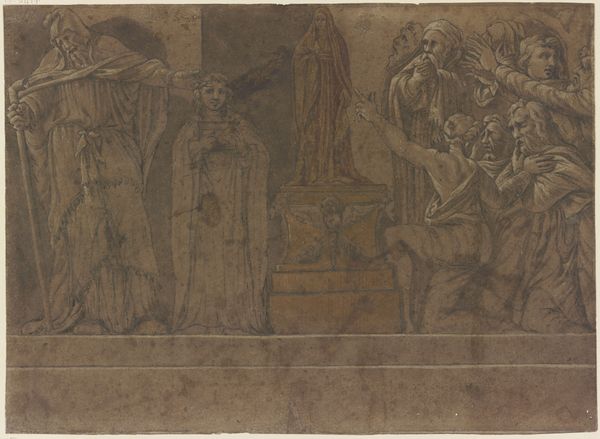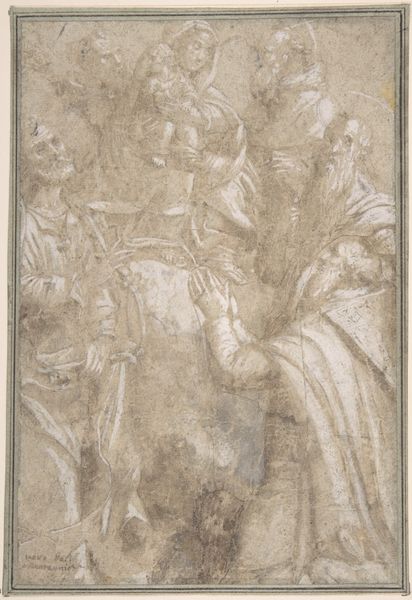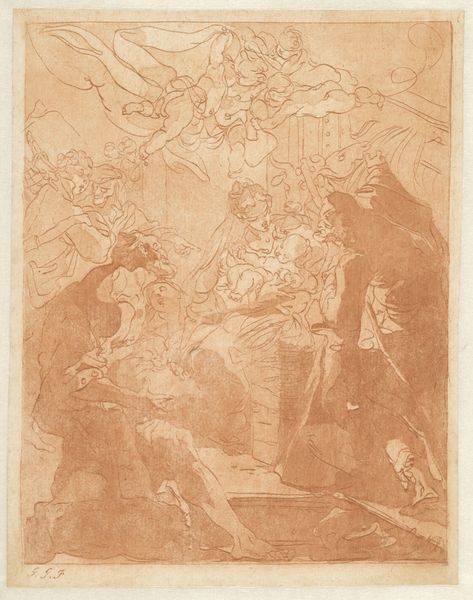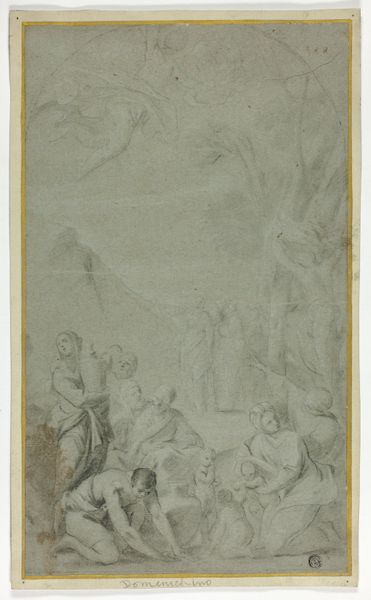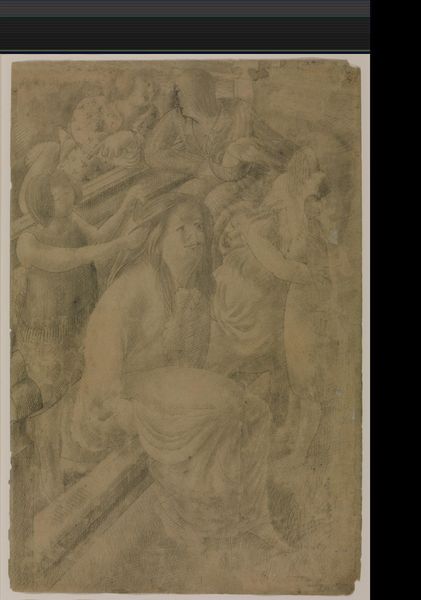
drawing, paper, ink, pen
#
drawing
#
toned paper
#
allegory
#
figuration
#
paper
#
11_renaissance
#
ink
#
pen
#
northern-renaissance
#
nude
Dimensions: overall: 35.9 x 24 cm (14 1/8 x 9 7/16 in.)
Copyright: National Gallery of Art: CC0 1.0
Curator: Looking at this drawing, I'm immediately drawn to the color and the texture; it has a rich, almost tactile quality despite being just pen and ink. Editor: Yes, it's Frans Floris I's "Diana and Endymion," created around 1560 using pen and ink on toned paper. You can really see how he utilizes the paper itself as part of the composition. Curator: The toned paper provides a mid-tone that then lets him build up these incredible detailed textures with ink, look how this tonal contrast generates highlights and shadows that suggest the play of light and shadow in the forest setting, adding dimension. Considering Floris’s workshop context, I wonder about the role of assistants in prepping the ground. Editor: That's a great point. Workshop practice would have played a role, definitely, influencing not just production but also how these images circulated. It’s interesting to consider who this drawing was for; Was it a study for a larger painting? An end in itself, meant for a collector's cabinet? The story itself—the goddess Diana gazing upon the sleeping Endymion—resonates with ideas of love, beauty, and the power of the divine, but that presentation, it exists within specific patronage networks and elite circles. Curator: Exactly, and think about the materials involved: where did the paper come from? Who produced the ink, and with what ingredients? Each material has its own history and trajectory, contributing to the overall cultural significance of the work. It is very demonstrative of its time. Editor: I agree. The image subtly normalizes a classical artistic canon within a northern European context, creating visual vocabularies and social hierarchies tied to artistic patronage. That choice of subject matter as an emblem of learned status. It would reflect the owner, their own place in a complex cultural landscape, but would only do that within the right setting. Curator: Reflecting on it, I find myself captivated by the skill evident in its execution and the labor involved to create this delicate and compelling image, it provides me insights on that specific cultural setting. Editor: Yes, examining this piece offers a deeper appreciation of its historical importance, the values, and the intellectual landscape of its time, specifically to explore power relations, patronage networks, and the role of the artwork in its circulation.
Comments
No comments
Be the first to comment and join the conversation on the ultimate creative platform.
